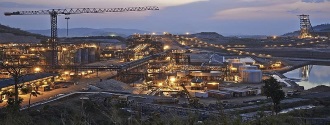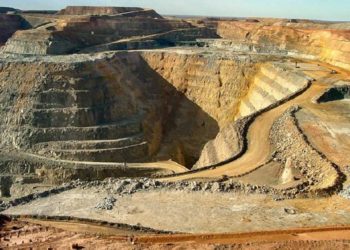Randgold Resources’ annual resource and reserve declaration, published today as part of its annual report for 2015, shows attributable measured and indicated resources steady at 21.1 million ounces while inferred resources are marginally up to 6.7 million ounces. Total attributable reserves of 14.6 million ounces reflect a 3.5% reduction after mining depletion, with no change in the grade, in a year that delivered record production of 1.2 million ounces.
Loulo’s total mineral resources increased by 5%, net of depletion. This was driven by a significant increase of plus 600 000 ounces in the Gara underground inferred resources from the positive results of the Gara South drilling. Further drilling and design work are expected to convert a large portion of these resources to reserves in 2016. A drilling programme to define high grade resources is underway at Yalea as well. Total ore reserves after depletion decreased by 4% to 4.7 million ounces at 4.6g/t. At neighbouring Gounkoto, total ore reserves remained above 3 million ounces with an 8% increase in grade on the back of an updated underground feasibility study which increased the underground reserve to 1.1 million ounces at 7.2g/t. A lower cost profile and higher grade resource model have highlighted the potential for a superpit mining option, which together with an underground mine is now the subject of a trade-off study planned for completion in 2016.
At Kibali in the Democratic Republic of Congo, total reserves decreased to 10.6 million ounces at 4.1g/t from 11.0 million ounces at 4.1g/t, with mining depletion being partly offset by gains from underground and the Pakaka and Gorumbwa satellite deposit. Resources were down after depletion by 5% as a result of mining and the ongoing assessment of the substantial resource base acquired from Moto.
In Côte d’Ivoire, Tongon’s resources and reserves decreased marginally with partial replacement from ongoing advanced grade control drilling within the pit. Drilling continues to highlight the potential for further gains within and immediately below the current Southern Zone pit design and nearby satellite deposits which will be further tested in 2016.
Group general manager evaluation Rod Quick said Randgold’s reserve and resource management was based on the calculation of its Life of Mine reserves at a gold price of $1 000/oz, coupled with a strong emphasis on the optimal exploitation of the various orebodies by each of the operations.
Chief executive Mark Bristow said the fact that the group’s reserve grade remained intact demonstrated that Randgold had not been forced into high-grading by the challenging market conditions.
“We’ve been able to steer a steady course through some choppy waters because our long term strategy takes the cyclical nature of the gold mining industry fully into account. By ensuring that our operations are focused on real returns and breakeven cash flows, we have secured a profitable consolidated business plan for at least 10 years at an annual production in excess of one million ounces, based on our existing reserves. In the meantime, our exploration teams are hard at work replenishing those reserves as well as hunting for our next big discovery,” he said.








